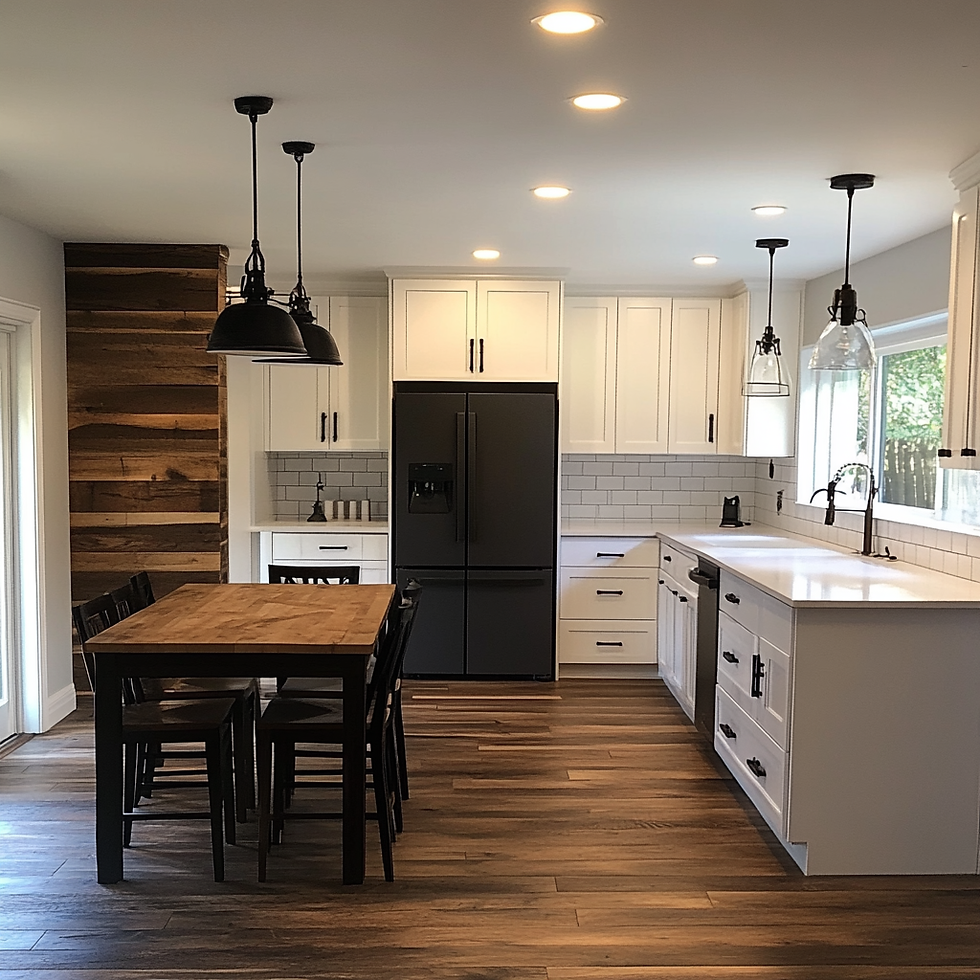How to Build and Maintain a Remodeling Budget That Works
- supremeprojectsroo
- Jun 16
- 2 min read
Updated: Aug 20

Understanding the Importance of a Remodeling Budget
Establishing a comprehensive remodeling budget is essential for homeowners aiming to enhance their living spaces without financial strain. A well-structured budget not only guides spending but also helps in making informed decisions throughout the renovation process.
Step 1: Define Your Remodeling Goals
Begin by clearly outlining the objectives of your remodeling project. Whether it’s updating a kitchen, adding a bathroom, or enhancing energy efficiency, understanding your goals will shape the scope and scale of the renovation.
Step 2: Research and Estimate Costs
Gather detailed information on the costs associated with your project. This includes materials, labor, permits, and any additional expenses. Utilize online resources, consult with professionals, and review similar projects to develop a realistic cost estimate.
Step 3: Establish a Contingency Fund
Unexpected expenses are common in remodeling projects. Allocate a contingency fund, typically 10-20% of the total budget, to cover unforeseen costs such as structural issues or material price fluctuations.
Step 4: Prioritize Spending
Identify which aspects of the project are most important and allocate funds accordingly. Prioritizing essential elements ensures that critical components are completed even if budget adjustments are necessary.
Step 5: Choose the Right Professionals
Selecting experienced and reputable contractors is crucial. Obtain multiple bids, check references, and verify credentials to ensure quality workmanship and adherence to budget constraints.
Step 6: Monitor Progress and Expenses
Maintain detailed records of all expenditures and regularly compare them against the budget. This practice allows for timely adjustments and helps prevent overspending.
Step 7: Communicate Effectively
Maintain open and consistent communication with all parties involved in the project. Clear communication helps in addressing issues promptly and keeps the project aligned with the budget and timeline.
Step 8: Review and Reflect
Upon completion, evaluate the project’s adherence to the budget and identify lessons learned. This reflection is valuable for future projects and continuous improvement in budgeting practices.
Conclusion
A successful remodeling project hinges on meticulous budgeting and proactive management. By following these steps, homeowners can achieve their renovation goals while maintaining financial stability — and at Supreme Projects, we’re here to help every step of the way.
FAQs
Q1: How much should I allocate for a contingency fund?
A contingency fund of 10-20% of the total project budget is recommended to cover unexpected expenses.
Q2: What is the best way to estimate remodeling costs?
Research similar projects, consult with professionals, and use online calculators to develop a realistic cost estimate.
Q3: How can I ensure my project stays within budget?
Regularly monitor expenses, maintain open communication with contractors, and be prepared to make adjustments as needed.
Q4: Why is it important to prioritize spending in a remodeling project?
Prioritizing ensures that essential components are completed and helps in making informed decisions if budget adjustments are necessary.
Q5: How do I choose the right contractor for my project?
Obtain multiple bids, check references, verify credentials, and select a contractor with experience relevant to your specific project needs.




Comments